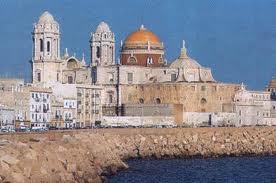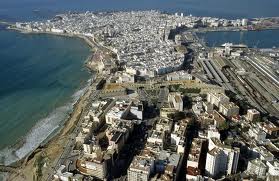Museums in Cádiz
When it comes to natural beauty, few places can call themselves peers to Cádiz. An utterly unforgettable spot, this narrow strip of land precariously appended to the peninsula has been home to a wide array of civilizations, turning it into the oldest inhabited city in the Western world. With three thousand years of history behind its back, it comes as no surprise that Cádiz is a city rich in myths and legends, which claims as divine a heritage as Rome, through its foundation by Hercules himself, who came to the region to complete one of the ten labours that would allow him to atone for murdering his children.

Fortunately, alongside fanciful tales of heroes and divinities, the city also boasts plenty of man-made wonders to accompany the prowess of its scenery. One of the most pleasant places to learn Spanish in Spain, Cádiz enables you to combine language and culture – be it culinary, high brow or popular – at every turn.
Proof of this is the fascinating array of museums that add a touch of sophistication to this stunning place. Undoubtedly, the most remarkable piece of architecture in the city is the cathedral, with its sober facade, its yellow cupola and its extraordinary museum: a valuable source of historical as well as artistic information, the cathedral as we can see it today was built between 1722 and 1838 in order to replace the previous cathedral, today known as the Iglesia de Santa Cruz. These days the new cathedral dominates the landscape of the city offering an insight into the role of the church beyond its spiritual scope.
Beyond the boundaries of the cathedral, Cádiz offers its visitors a charming labyrinth of squares and lanes that give a genuine image of the combination of styles characteristic of the southern half of the Iberian peninsula. Geographically restrained from any possibility of growth, the city is largely dominated by the sense of it being a fortified settlement, despite the fact that there are no walls around it. There is, however, a large, sumptuous gate, which is one of the most popular tourist attractions as well as the main passageway into the city: we are referring to the Puerta de Tierra, of course, with its quirky little turret over it.
While Cádiz is constrained in its size, space inside the city seems to be fragmented into a dimension of its own, as the myriad different squares open up to the visitor, encouraging a relaxing stroll and more than just an occasional stop for a cup of coffee, a plate of tapas, a refreshing drink. Meanwhile, outside, the Castle of Santa Catalina rises imposingly from the last corner of the peninsula, looking out defiantly in the direction of the Mediterranean Sea. Built in 1596 by Felipe II, the castle still has an air of insolence about it, evocative of vast portions of Spanish history.

Santa Catalina is not the only fortification in the vicinity of Cádiz: on the other end of the peninsula, right at the top of La Caleta beach lies the Castle of San Sebastián, a walled fortress that overlooks the long bay at the heart of the city from what once was a detached islet. Traditionally said to be standing on the site of an ancient Greek temple devoted to the god, Cronus, the building was originally conceived as a hermitage, before it became a garrison of sorts, intended to guard the northern portion of the island. Nowadays, the islet is linked to the peninsula through a promenade/breakwater.
Several other civil structures capture the imagination of visitors as they wander around Cádiz: one of them is the Gran Teatro Falla, the theatre, built in 1886 after the previous theatre burned down, and located in the Plaza Fraguela. Of an attractive neo-Mudéjar style, the building is made of colourful bricks with horseshoe arches opening up on the three vertical panels of the facade. Equally interesting is the neoclassical jailhouse, the Cárcel Real, a solid building which displays perfect symmetry and which demonstrated the lofty practical uses to which art was supposed to be put to use in the late XVIII century.
Any Cádiz city guide will tell you, however, that the one thing you cannot miss if you are on a holiday is the Cádiz Museum. A combination of an archeological cabinet and a collection of fine art, this museum offers a great insight into the form and tradition of Spanish art.



